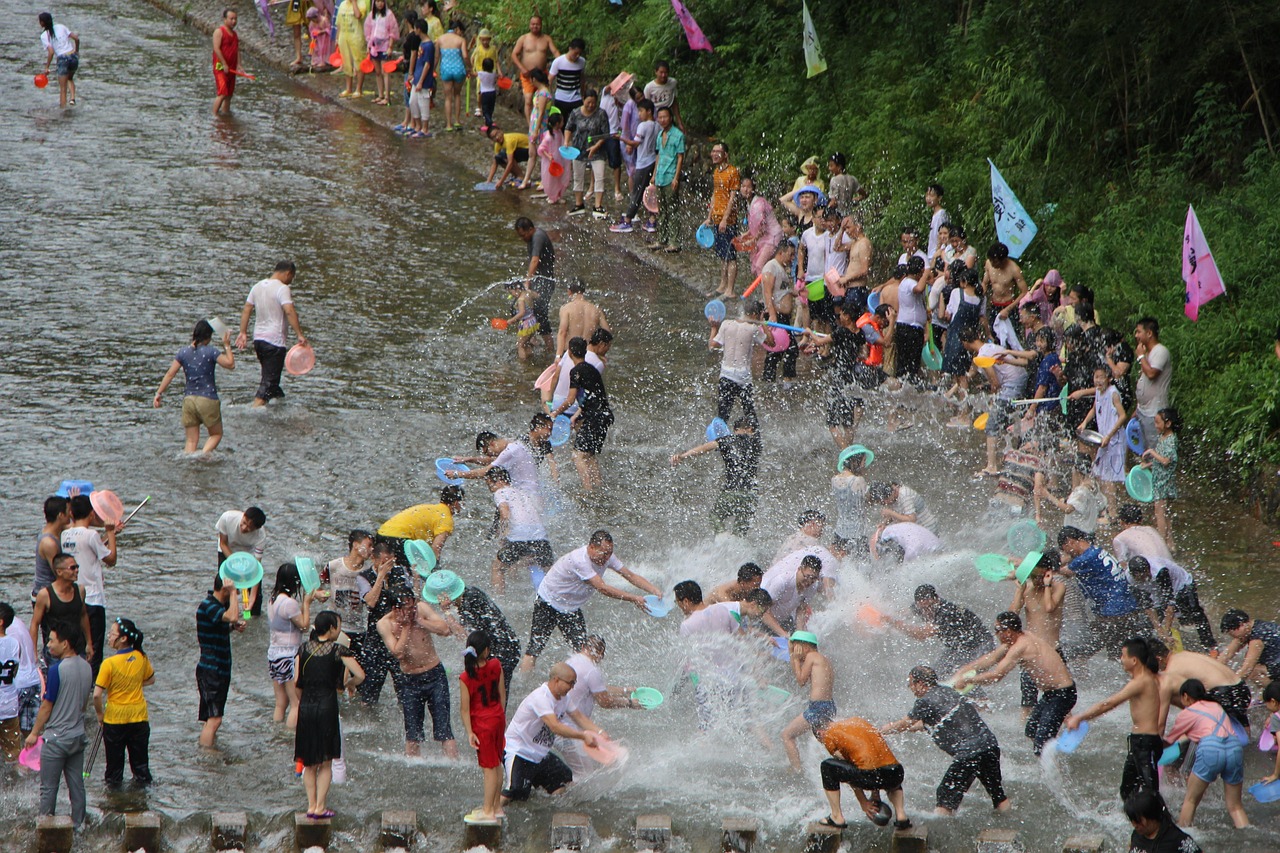The Songkran Festival, Thailand’s traditional New Year celebration, is one of the country’s biggest and most vibrant events. Every year, it brings crowds of locals and tourists into the streets of Bangkok for days of water fights, parades, and cultural festivities.
This year, however, the festival didn’t just bring excitement — it also revealed some interesting shifts in who was showing up. Data showed a clear increase in international visitors, especially Chinese-speaking tourists. At the same time, the share of Thai-language speakers, who are mostly local residents, declined slightly. This may suggest that some locals chose to leave the city or avoid busy tourist areas during the celebrations.
Another standout trend was the wider mix of nationalities. In addition to Chinese visitors, more people speaking languages like Hebrew, Russian, and Malaysian were seen in key hotspots, such as Khaosan Road. These shifts highlight how Songkran is evolving into an even more global event — turning parts of Bangkok into diverse cultural gathering points during the festivities.
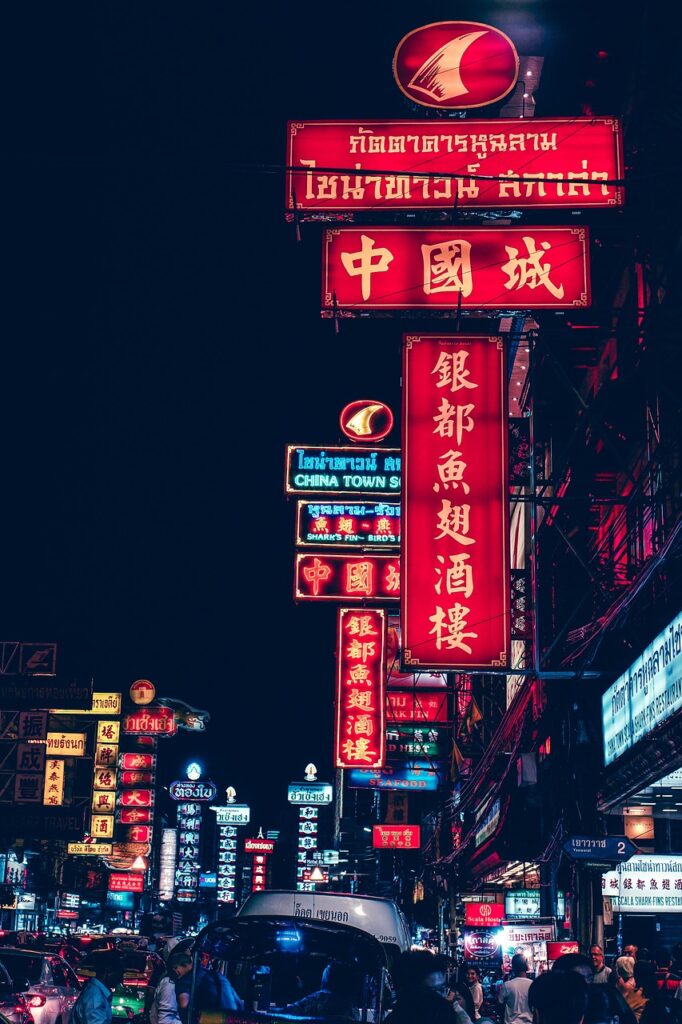
Significant Increase in Chinese Visitors During Songkran
One of the most striking trends during the Songkran Festival was the significant increase in Chinese-language visitors. Across all regions, the percentage of Chinese-language users steadily rose each day, reflecting a broader interest from Chinese-speaking tourists.
From April 11 to April 15, the overall share of Chinese-language users grew from 9.72% to 14.49%. However, the most dramatic shift was observed in the Nararom Junction area, where the percentage of Chinese-language speakers skyrocketed from 8.94% on April 11 to an impressive 17.60% by April 15. This surge highlights the growing number of Chinese tourists visiting Bangkok during the festival, likely driven by the long holiday period and cultural appeal of Songkran.
Fewer Local Thai Speakers During the Festival
On the flip side, the proportion of Thai-language speakers—mostly locals—decreased slightly throughout the festival. This decline was most notable in areas frequented by both locals and tourists, like Silom MRT, where the share of Thai-language users dropped from 86.34% on April 11 to 83.20% on April 15.
Overall, the share of Thai-language speakers in the city declined from 85.82% to 80.96%. This could be due to a number of factors: many Bangkok residents might have traveled out of the city for their own Songkran celebrations, or they may have avoided the crowded tourist spots in favor of quieter locations. This shift reflects how locals balance the festival’s celebrations with their own personal traditions.
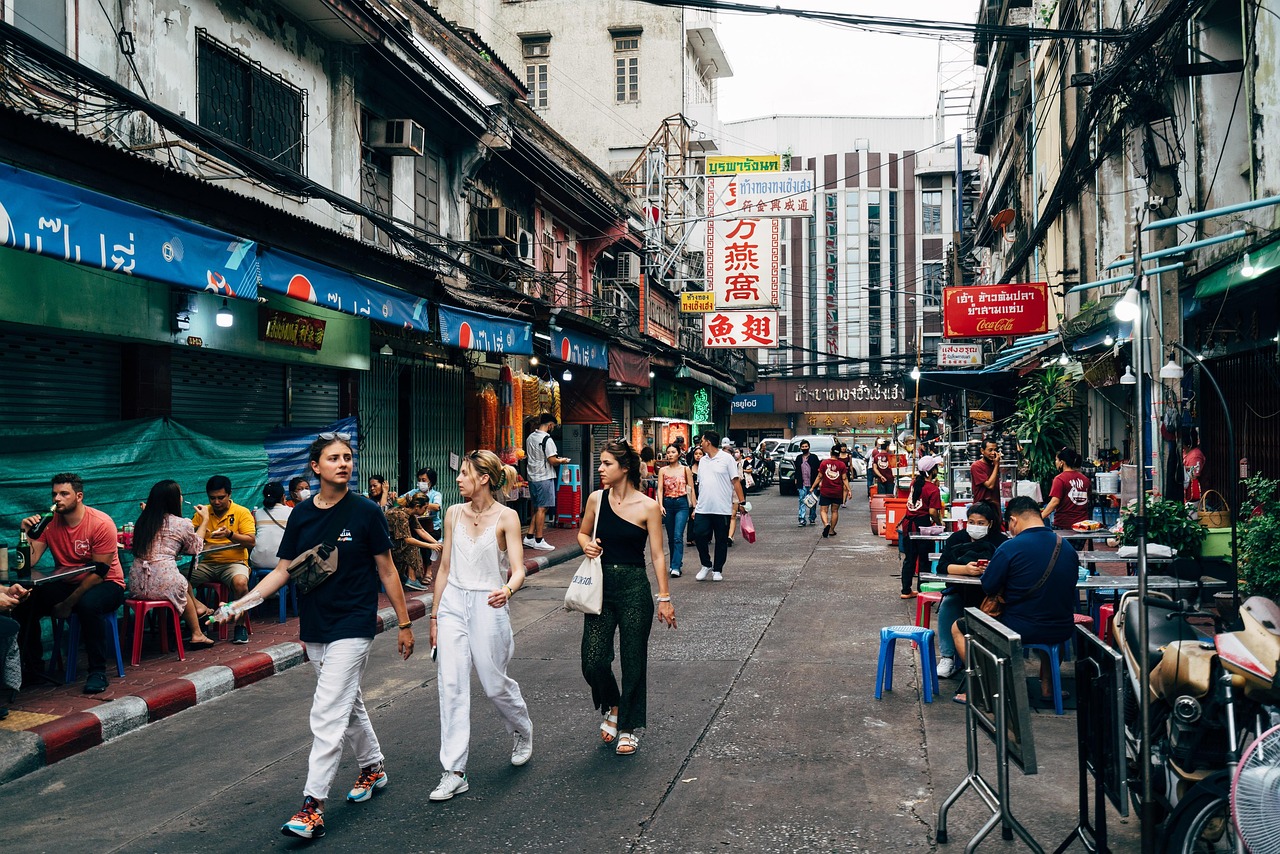
Broader Diversity in Visitor Demographics
In addition to the increase in Chinese-speaking tourists, the Songkran Festival saw a more diverse range of nationalities visiting Bangkok, particularly in the areas of Khaosan Road. Greek, Hebrew, Russian, and Malaysian speakers became more prominent during the festival, with noticeable increases by April 15.
For instance, Khaosan Road from Tanao roadside saw rises in Hebrew, Russian, and Malaysian visitors, while from the Chakrabongse roadside showed even more language variety. This indicates that Khaosan Road attracted a globally diverse crowd in general. Japanese and Korean visitors also maintained a consistent presence, though their numbers were smaller in comparison to other languages.
High Tourist Density on Khaosan Road
Khaosan Road, long known as a hotspot for backpackers and international tourists, showed a noticeable drop in Thai-language usage compared to other parts of the city — with declines of 2 to 5 percentage points.
At the same time, Chinese-language users surged in the area. On April 15, some spots reached as high as 21.26%, while others consistently stayed between 14% and 17%. This spike underscores Khaosan Road’s role as a vibrant tourist hub, particularly for Chinese-speaking visitors drawn to the festival’s cultural energy and celebrations.
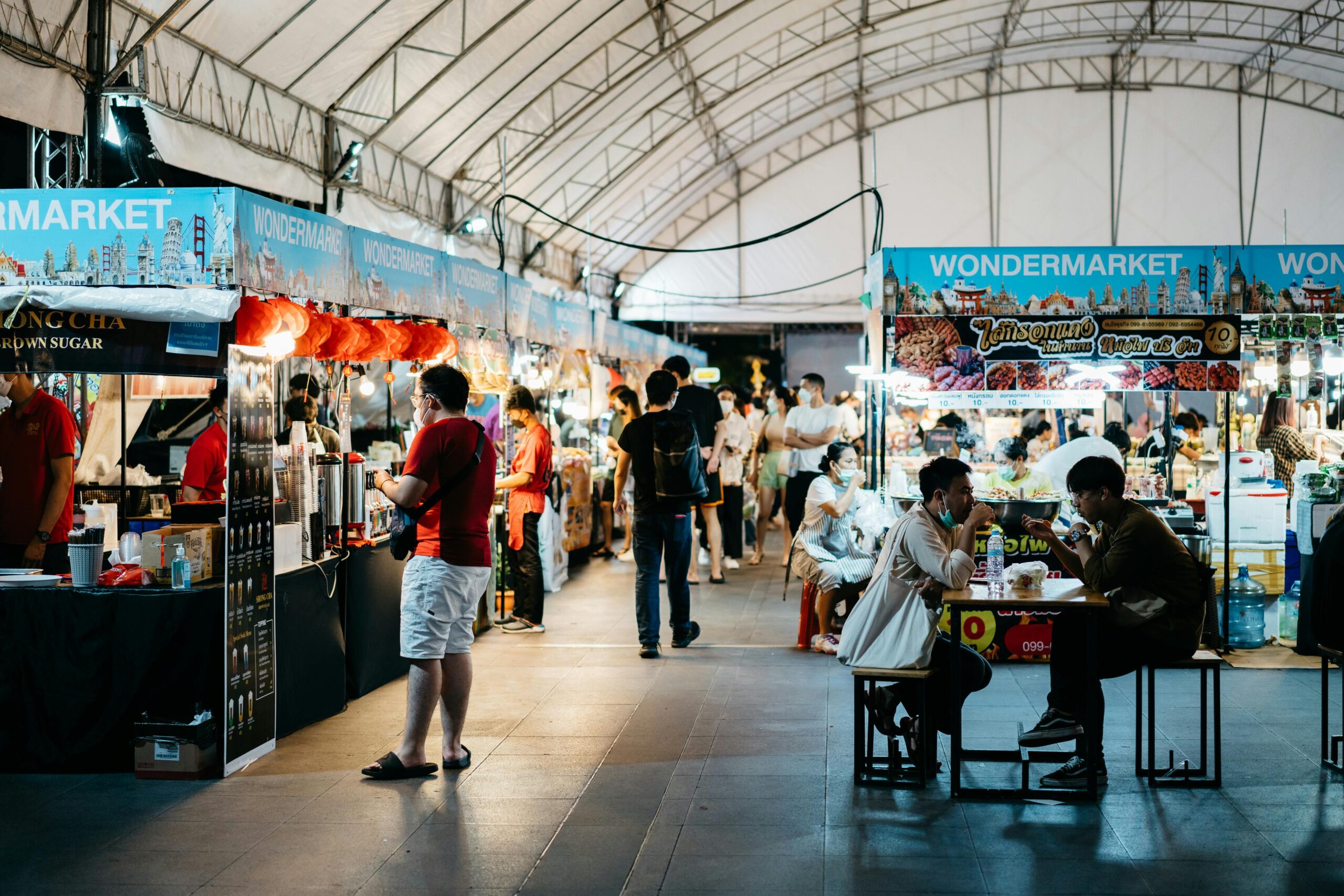
Richer Diversity in Visitor Demographics
The rise in international tourists, especially from China, highlights Khaosan Road’s role as a festival epicenter. Known for its lively street performances, water-splashing events, and vibrant cultural parades, Khaosan provided the perfect setting for both tourists and locals to gather and celebrate.
Despite the drop in Thai-language speakers in the area, Khaosan Road remained a buzzing focal point, attracting visitors eager to engage in the fun. Its global appeal was undeniable, with tourists from all over the world flocking to the area for a taste of Bangkok’s famous Songkran festivities.
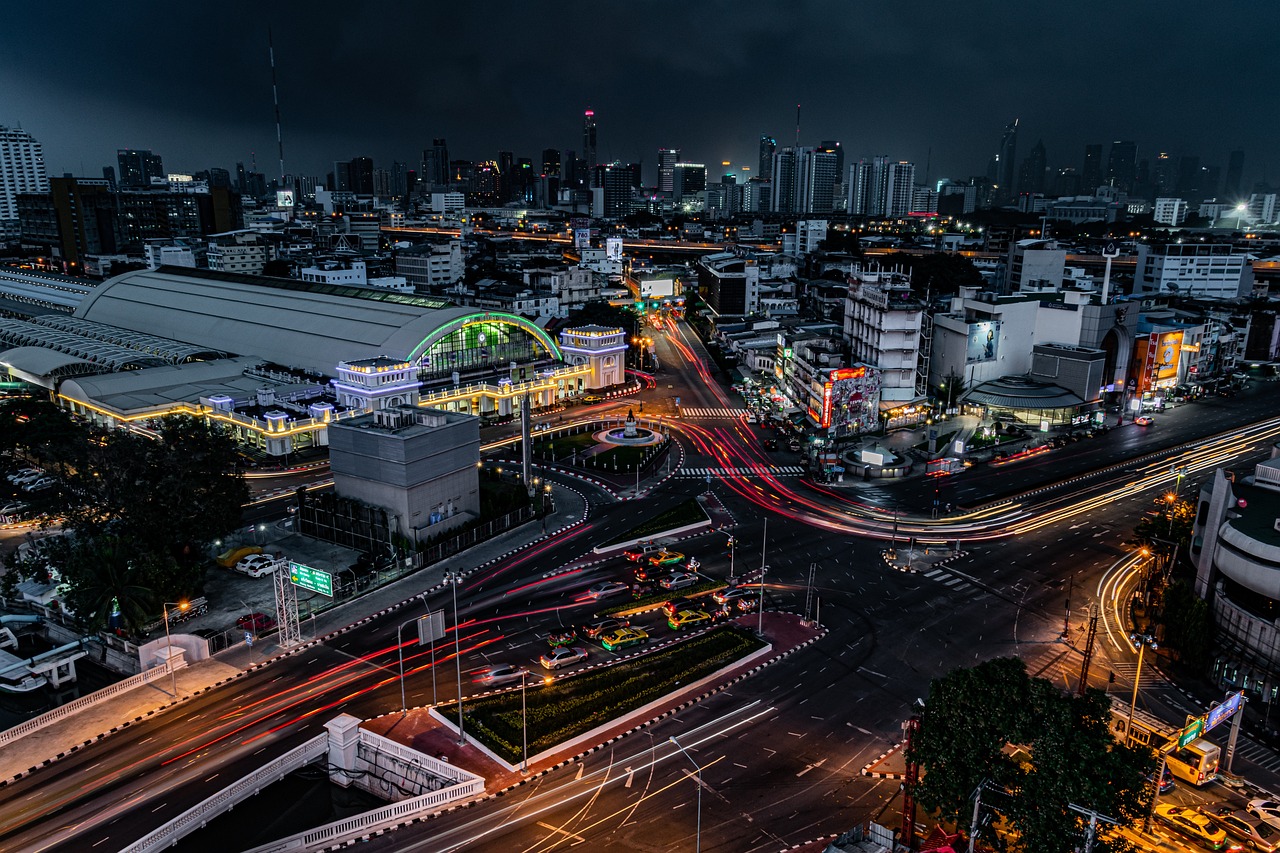
Songkran 2025 was not only a time of cultural celebration but also a period of shifting dynamics in Bangkok’s visitor landscape. While the number of local Thai-language speakers declined slightly, this was more than compensated by the influx of international visitors—especially from China. The surge in diversity, particularly in areas like Khaosan Road, further emphasizes the global appeal of Songkran and Bangkok’s ability to attract travelers from across the world.
As we look ahead to future Songkran festivals, the evolving patterns in foot traffic and language use will continue to offer valuable insights into how Bangkok’s tourism landscape is shifting, and how the city’s vibrant celebrations connect with a more diverse global audience
Curious about how we uncovered these insights? Explore the OpsezN Language Analytics Solution!

